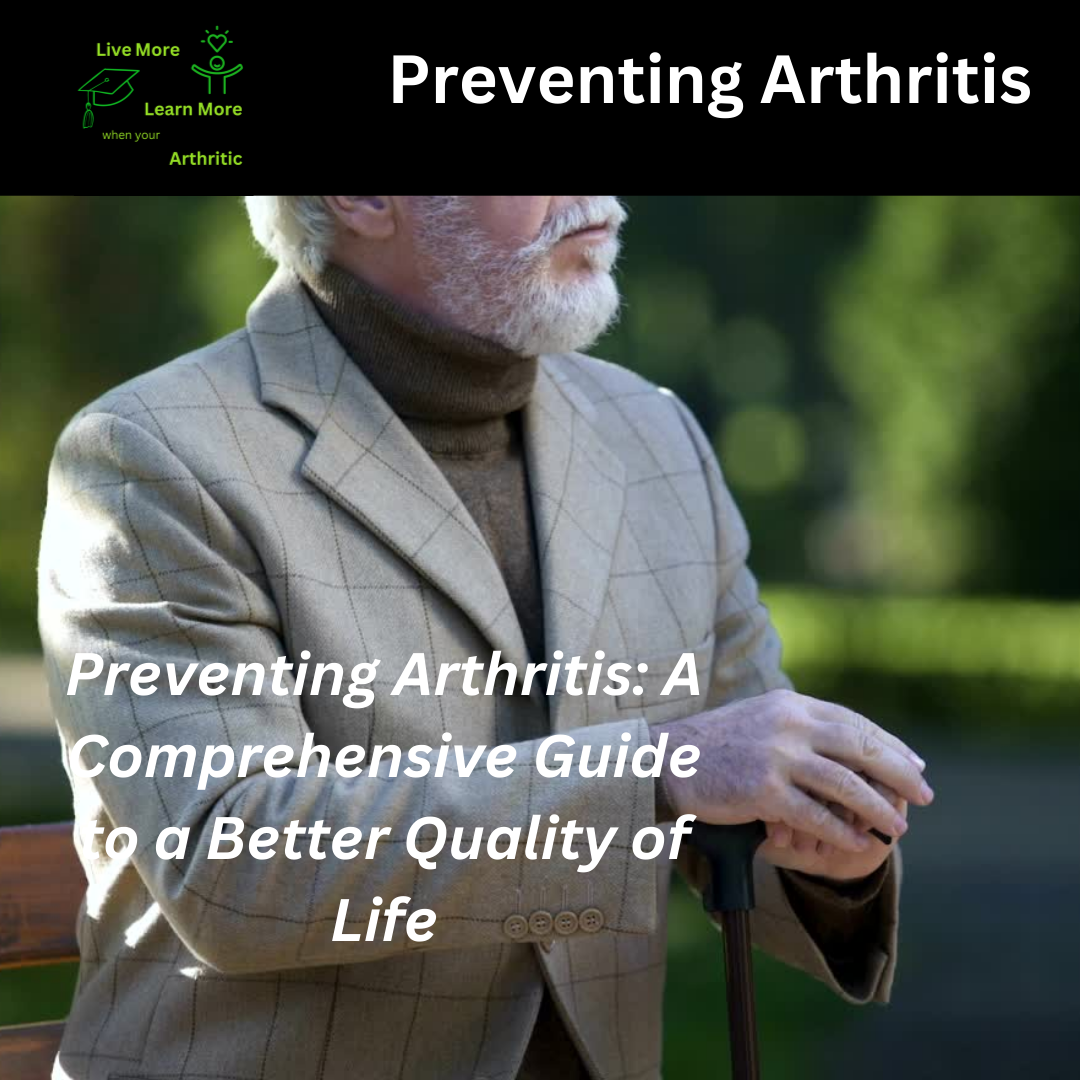
Preventing Arthritis
Arthritis, a condition marked by inflammation and stiffness of the joints, affects millions of people worldwide. It can significantly impact one’s quality of life, but the good news is that there are steps you can take to prevent it and manage its effects. In this comprehensive guide, we’ll delve into the various types of arthritis, how it starts, how it works, and how it’s interconnected with other aspects of health. We’ll also explore preventative actions you can take and the benefits of doing so, as well as the potential complications of being arthritic.
Arthritis isn’t just one disease; it’s an umbrella term encompassing over 100 different types of joint diseases and conditions. Some of the most common types include:
- Osteoarthritis: This is the most common form, often resulting from wear and tear on the joints over time.
- Rheumatoid Arthritis: An autoimmune disorder where the immune system mistakenly attacks the joints.
- Psoriatic Arthritis: A form associated with the skin condition psoriasis.
- Gout: Caused by the accumulation of uric acid crystals in the joints.
- Lupus Arthritis: Linked to the autoimmune disease lupus.
Each type has its own distinct causes and symptoms, but they all share one thing in common: inflammation of the joints.
How Arthritis Starts
The exact cause of arthritis varies depending on the type, but several common factors can contribute to its development, including:
- Genetics: Family history can play a significant role.
- Age: The risk increases with age.
- Joint Injuries: Past injuries can lead to arthritis later in life.
- Infections: Certain infections can trigger arthritis.
- Autoimmune Diseases: Conditions like rheumatoid arthritis result from the immune system attacking the body’s own tissues.
- Obesity: Excess weight puts additional strain on the joints, particularly the knees and hips.
How Arthritis Works
Arthritis affects the joints, which are the points where two bones meet. Normally, the joint is surrounded by a protective layer of cartilage, which helps to cushion the bones and allows them to move smoothly. In arthritis, this cartilage breaks down, leading to pain, swelling, and stiffness in the affected joint. Over time, the joint may become damaged, leading to further disability and decreased mobility.
Interconnectedness of Arthritis
Arthritis doesn’t just affect the joints; it can also have far-reaching effects on other aspects of health. For example, people with arthritis are at higher risk of developing other chronic conditions such as heart disease, diabetes, and depression. This is because inflammation, which is a hallmark of arthritis, can affect the entire body and contribute to systemic inflammation.
Preventative Actions
While there’s no surefire way to prevent arthritis entirely, there are steps you can take to reduce your risk and manage its effects:
Maintain a Healthy Weight
Obesity is a major risk factor for arthritis, particularly osteoarthritis. By maintaining a healthy weight through a balanced diet and regular exercise, you can reduce the strain on your joints and lower your risk of developing arthritis.
Exercise Regularly
Regular physical activity is essential for maintaining joint health and flexibility. Aim for a combination of cardiovascular exercise, strength training, and flexibility exercises to keep your joints strong and mobile.
Eat a Balanced Diet
A diet rich in fruits, vegetables, whole grains, and lean proteins can help reduce inflammation and support joint health. Avoiding processed foods, sugary snacks, and excessive alcohol consumption can also help prevent arthritis.
Protect Your Joints
Avoid activities that put excessive strain on your joints, such as repetitive motions or heavy lifting. Use proper body mechanics and protective gear when engaging in physical activity to prevent injuries.
Get Regular Check-Ups
Regular visits to your healthcare provider can help detect arthritis early and allow for prompt treatment. Be sure to discuss any joint pain or stiffness you experience with your doctor, as early intervention can help prevent further damage.
Benefits of Preventative Actions
Taking proactive steps to prevent arthritis can have numerous benefits for your overall health and well-being, including:
- Reduced Risk of Developing Arthritis: By addressing risk factors such as obesity and joint injuries, you can lower your chances of developing arthritis in the first place.
- Improved Joint Health: Regular exercise and a balanced diet can help keep your joints strong and flexible, reducing the risk of joint damage and stiffness.
- Better Overall Health: Many of the preventative actions recommended for arthritis prevention, such as maintaining a healthy weight and staying physically active, have benefits beyond joint health, including reduced risk of chronic diseases such as heart disease and diabetes.
- Enhanced Quality of Life: By taking steps to prevent arthritis, you can enjoy greater mobility, less pain, and improved overall quality of life as you age.
Complications of Arthritis
While preventative actions can help reduce the risk of developing arthritis, it’s important to recognize that complications can still occur. Some potential complications of being arthritic include:
- Chronic Pain: Arthritis can cause persistent pain and discomfort in the affected joints, which can significantly impact daily activities and quality of life.
- Joint Damage: In severe cases, arthritis can lead to permanent damage to the joints, resulting in deformity and loss of function.
- Disability: Severe arthritis can impair mobility and make it difficult to perform everyday tasks, leading to disability and reduced independence.
- Increased Risk of Other Health Problems: People with arthritis are at higher risk of developing other chronic conditions such as heart disease, diabetes, and depression, due to the systemic inflammation associated with the disease.
In conclusion, while arthritis can be a challenging condition to manage, there are steps you can take to prevent it and mitigate its effects. By maintaining a healthy lifestyle, staying active, and seeking prompt medical attention for any joint pain or stiffness, you can reduce your risk of developing arthritis and enjoy a higher quality of life as you age. Remember, it’s never too late to start taking care of your joints and overall health.

